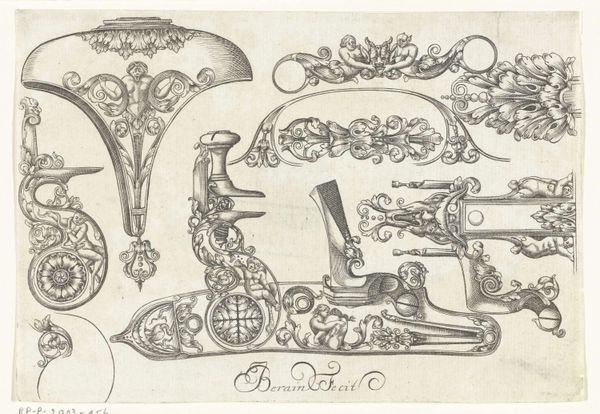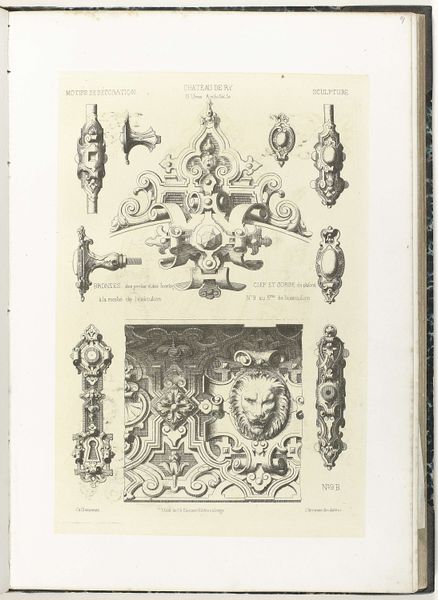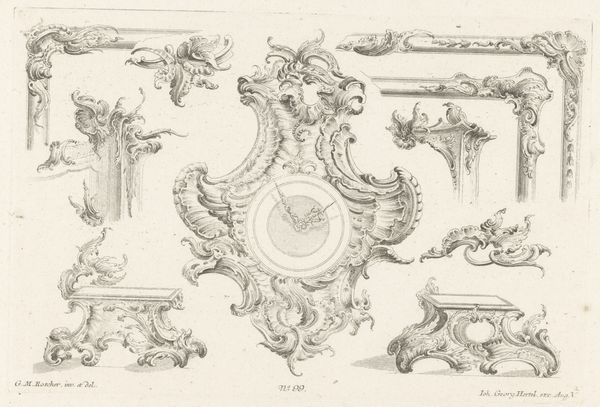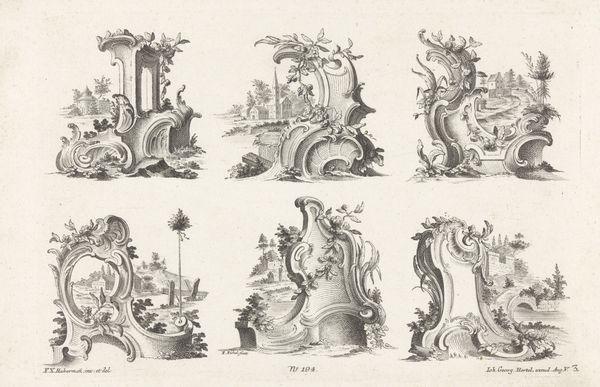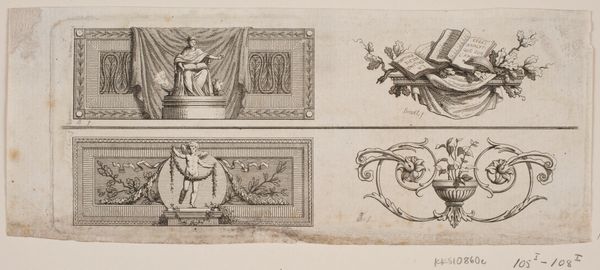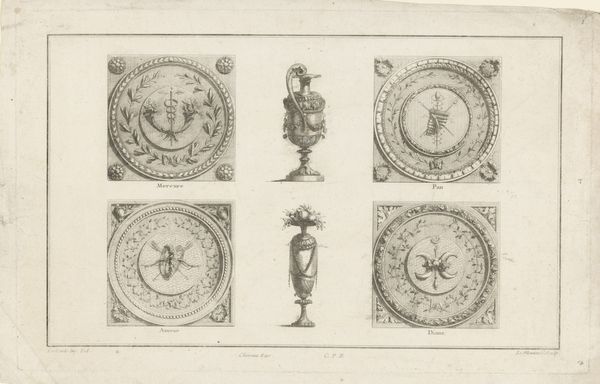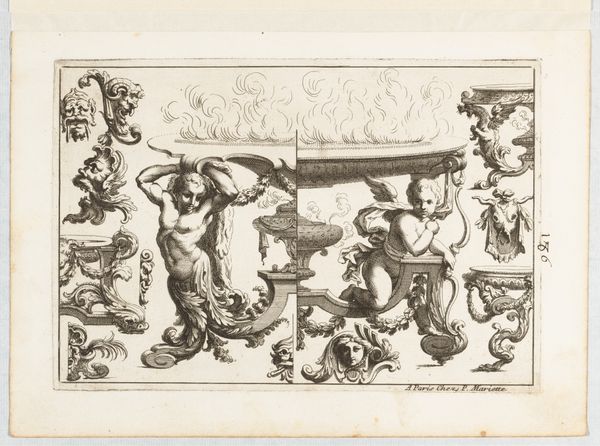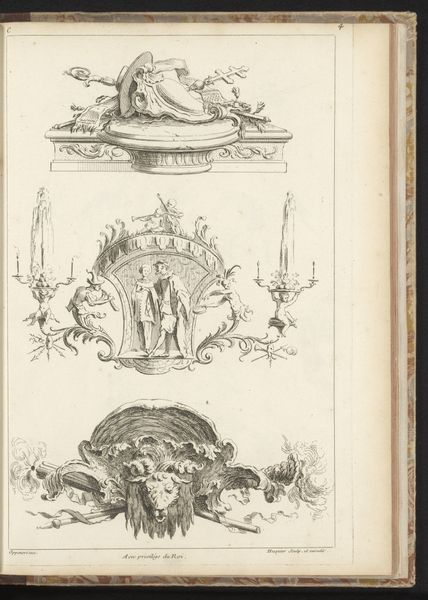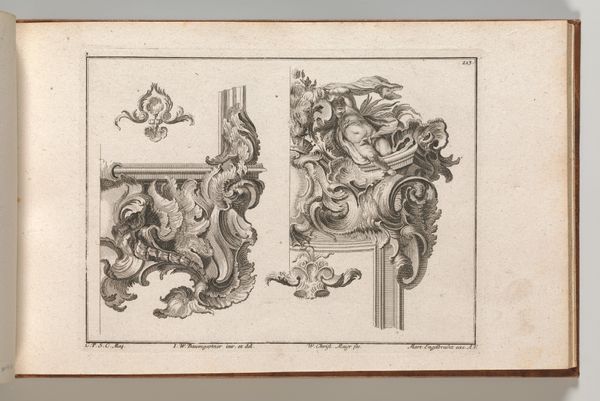
#
comic strip sketch
#
weapon
#
quirky sketch
#
sketch book
#
personal sketchbook
#
idea generation sketch
#
sketchwork
#
sketchbook drawing
#
storyboard and sketchbook work
#
sketchbook art
#
initial sketch
Dimensions: height 186 mm, width 285 mm
Copyright: Rijks Museum: Open Domain
Editor: So, this is a sketch called "Ornamenten aan laadstok en geweerplaten," created sometime between 1690 and 1725 by an anonymous artist, currently housed in the Rijksmuseum. It’s all about the details, isn't it? The meticulous drawings of the gun components, almost like exploded diagrams. What strikes me is how decorative even weapons were intended to be back then. How do you interpret this work within its historical context? Curator: This sketch offers a fascinating glimpse into the cultural mindset of the late 17th and early 18th centuries. Consider the status and symbolic importance of weaponry at the time. These weren't just tools of war, they were potent symbols of power, status, and artistry, reflecting the owner's wealth and taste. Do you see the influence of Baroque ornamentation? Editor: I do, all those swirling floral patterns! So, these weren’t just practical designs, they were making a statement. Were weapons viewed as art objects then? Curator: Precisely! This sketch could have been part of a pattern book, intended for gunsmiths or even wealthy patrons commissioning bespoke weapons. It reflects a convergence of artistry and military might. The very act of decorating something meant for inflicting harm speaks volumes about the values of the period and who had access to this imagery. Editor: It’s interesting how the political and the aesthetic intertwine here. It definitely shifts my perspective seeing weapons as more than just functional objects. Curator: It forces us to confront how art, even in utilitarian objects, often serves ideological functions, reinforcing existing social hierarchies. It makes you consider who these weapons were meant for, and against whom they were likely to be used. Editor: That’s a crucial point, thinking about the socio-political implications. I see the piece very differently now. Thanks for offering a fresh perspective! Curator: It’s a powerful reminder that art is rarely neutral; it’s always shaped by and reflects the values of its time. Thanks for sharing your thoughts.
Comments
No comments
Be the first to comment and join the conversation on the ultimate creative platform.
